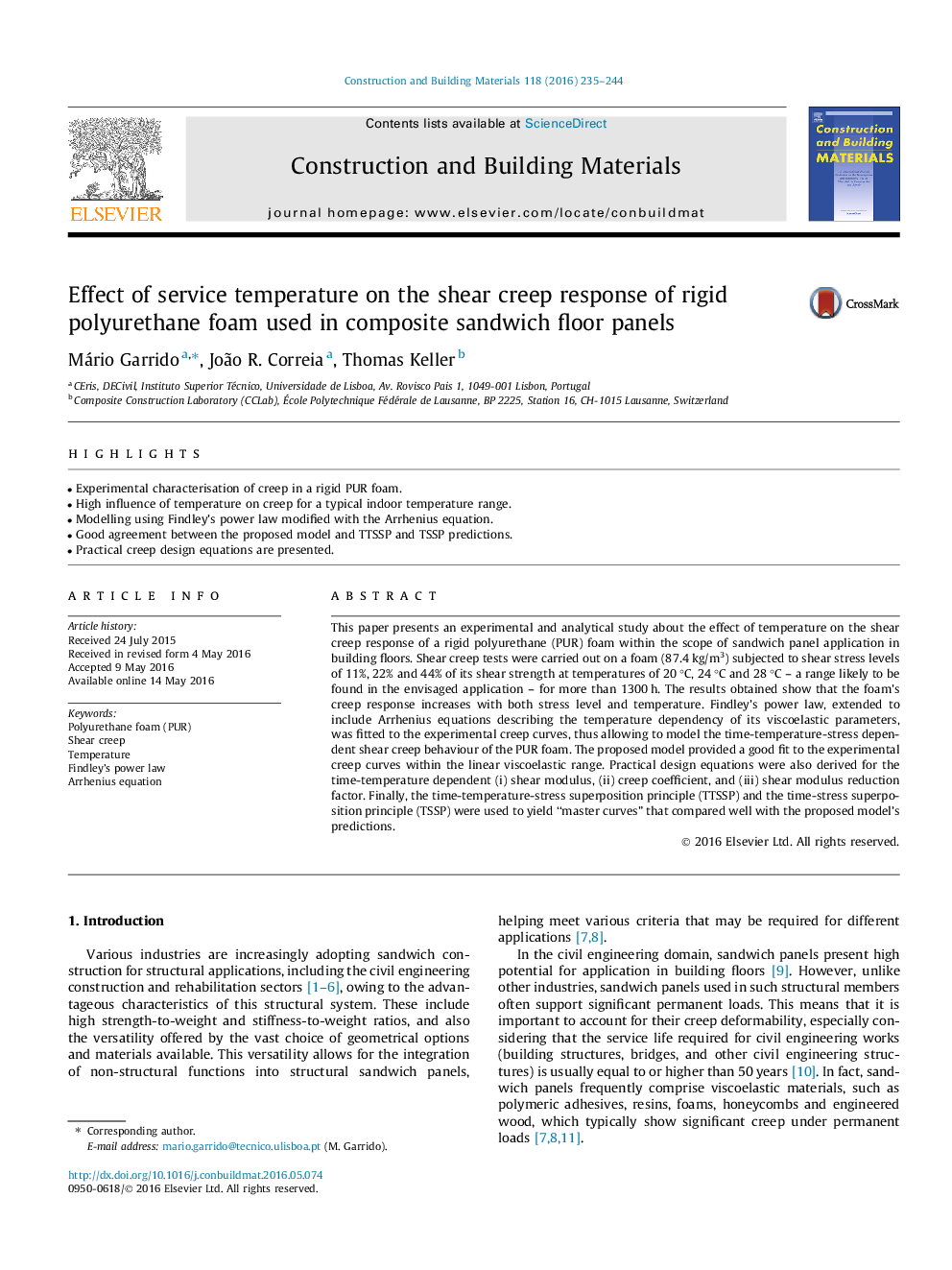| کد مقاله | کد نشریه | سال انتشار | مقاله انگلیسی | نسخه تمام متن |
|---|---|---|---|---|
| 255899 | 503534 | 2016 | 10 صفحه PDF | دانلود رایگان |
• Experimental characterisation of creep in a rigid PUR foam.
• High influence of temperature on creep for a typical indoor temperature range.
• Modelling using Findley’s power law modified with the Arrhenius equation.
• Good agreement between the proposed model and TTSSP and TSSP predictions.
• Practical creep design equations are presented.
This paper presents an experimental and analytical study about the effect of temperature on the shear creep response of a rigid polyurethane (PUR) foam within the scope of sandwich panel application in building floors. Shear creep tests were carried out on a foam (87.4 kg/m3) subjected to shear stress levels of 11%, 22% and 44% of its shear strength at temperatures of 20 °C, 24 °C and 28 °C – a range likely to be found in the envisaged application – for more than 1300 h. The results obtained show that the foam’s creep response increases with both stress level and temperature. Findley’s power law, extended to include Arrhenius equations describing the temperature dependency of its viscoelastic parameters, was fitted to the experimental creep curves, thus allowing to model the time-temperature-stress dependent shear creep behaviour of the PUR foam. The proposed model provided a good fit to the experimental creep curves within the linear viscoelastic range. Practical design equations were also derived for the time-temperature dependent (i) shear modulus, (ii) creep coefficient, and (iii) shear modulus reduction factor. Finally, the time-temperature-stress superposition principle (TTSSP) and the time-stress superposition principle (TSSP) were used to yield “master curves” that compared well with the proposed model’s predictions.
Journal: Construction and Building Materials - Volume 118, 15 August 2016, Pages 235–244
